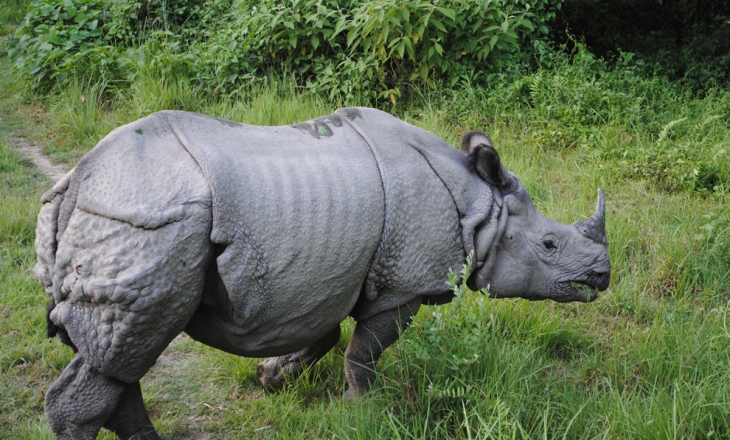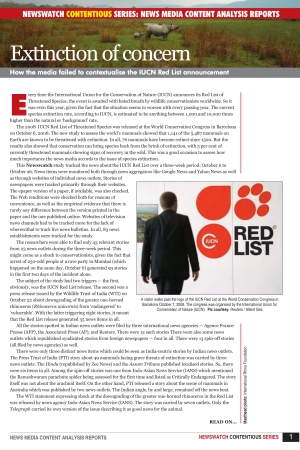Every time the International Union for the Conservation of Nature (IUCN) announces its Red List of Threatened Species, the event is awaited with bated breath by wildlife conservationists worldwide. So it was even this year, given the fact that the situation seems to worsen with every passing year. The current species extinction rate, according to IUCN, is estimated to be anything between 1,000 and 10,000 times higher than the natural or ‘background’ rate.
The 2008 IUCN Red List of Threatened Species was released at the World Conservation Congress in Barcelona on October 6, 2008. The new study to assess the world’s mammals showed that 1,141 of the 5,487 mammals on Earth are known to be threatened with extinction. In all, 76 mammals have become extinct since 1500. But the results also showed that conservation can bring species back from the brink of extinction, with 5 per cent of currently threatened mammals showing signs of recovery in the wild. This was a good occasion to assess how much importance the news media accords to the issue of species extinction.
This Newswatch study tracked the news about the IUCN Red List over a three-week period: October 6 to October 26. News items were monitored both through news aggregators like Google News and Yahoo News as well as through websites of individual news outlets. Stories of newspapers were tracked primarily through their websites. The epaper version of a paper, if available, was also checked. The Web renditions were checked both for reasons of convenience, as well as the empirical evidence that there is rarely any difference between the version printed in the paper and the one published online. Websites of television news channels had to be tracked more for the lack of wherewithal to track live news bulletins. In all, 83 news establishments were tracked for the study.
The researchers were able to find only 43 relevant stories from 23 news outlets during the three-week period. This might come as a shock to conservationists, given the fact that arrest of 230-odd people at a rave party in Mumbai (which happened on the same day, October 6) generated 93 stories in the first two days of the incident alone.
The subject of the study had two triggers — the first, obviously, was the IUCN Red List release. The second was a press release issued by the Wildlife Trust of India (WTI) on October 22 about downgrading of the greater one-horned rhinoceros (Rhinoceros unicornis) from ‘endangered’ to ‘vulnerable’. With the latter triggering eight stories, it meant that the Red List release generated 35 news items in all.
All the stories spotted in Indian news outlets were filed by three international news agencies — Agence France-Presse (AFP), the Associated Press (AP), and Reuters. There were 12 such stories There were also some news outlets which republished syndicated stories from foreign newspapers — four in all. There were 13 spin-off stories (all filed by news agencies) as well.
There were only three distinct news items which could be seen as India-centric stories by Indian news outlets. The Press Trust of India (PTI) story about 49 mammals facing grave threats of extinction was carried by three news outlets. The Hindu (republished by Zee News) and the Assam Tribune published localised stories. So, there were six items in all. Among the spin-off stories was one from Indo-Asian News Service (IANS) which mentioned the Rameshwaram parachute spider being assessed for the first time and listed as Critically Endangered. The story itself was not about the arachnid itself. On the other hand, PTI released a story about the scene of mammals in Australia which was published by two news outlets. The Indian angle, by and large, remained off the news beat.
The WTI statement expressing shock at the downgrading of the greater one-horned rhinoceros in the Red List was released by news agency Indo-Asian News Service (IANS). The story was carried by seven outlets. Only the Telegraph carried its own version of the issue describing it as good news for the animal.
PROJECT CREDITS: Study supervisor: Subir Ghosh; Research assistant: Priyanka Mittal











